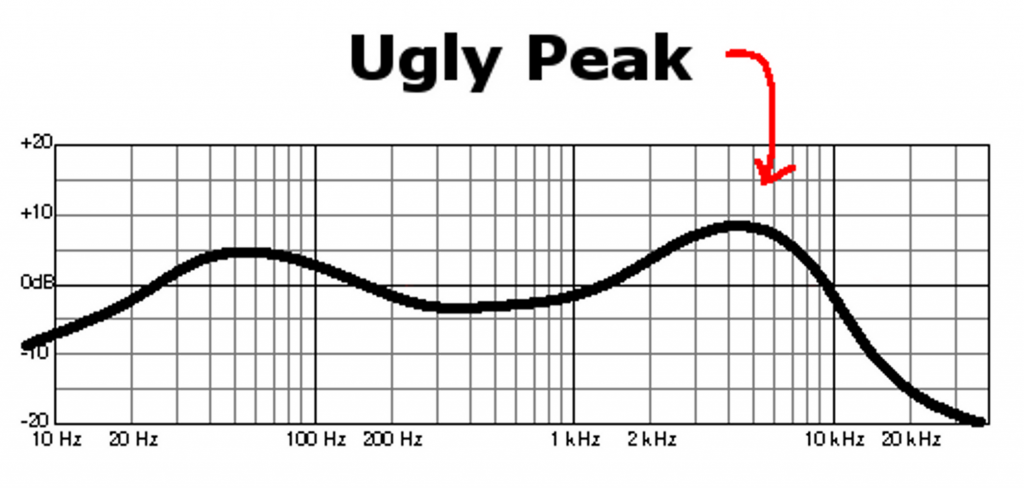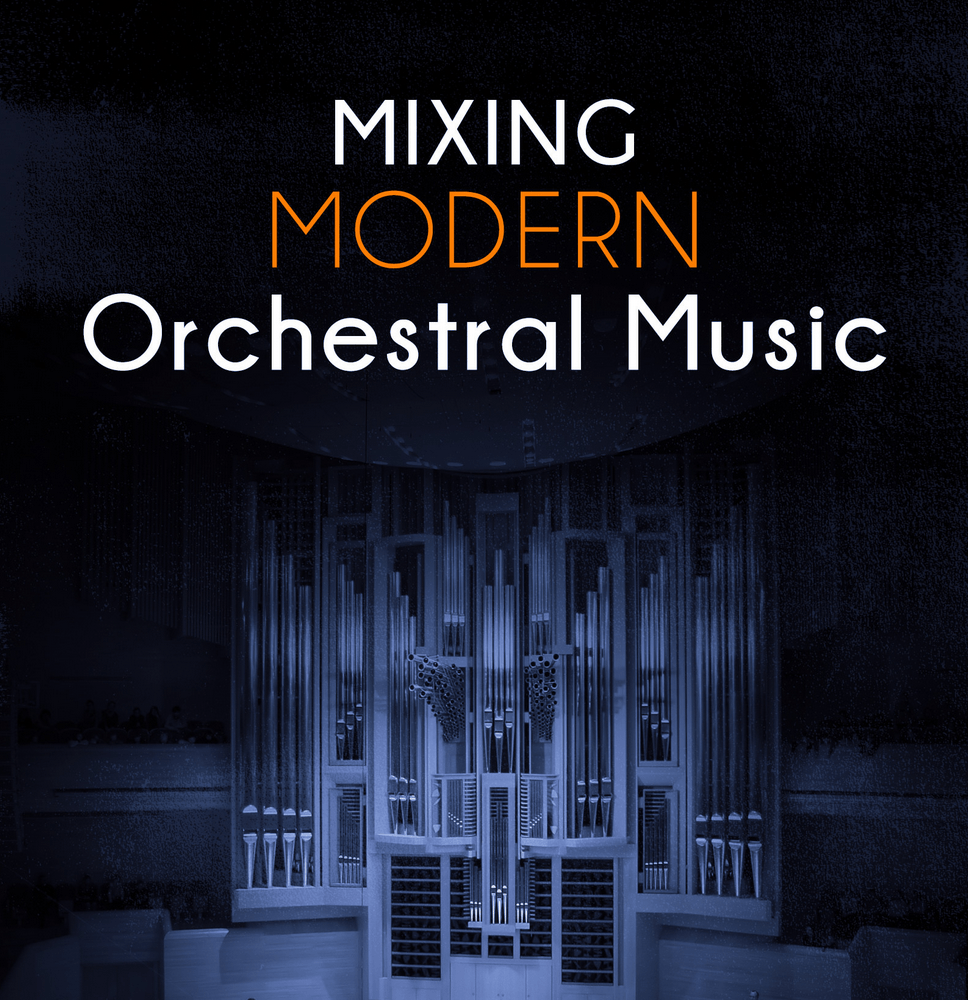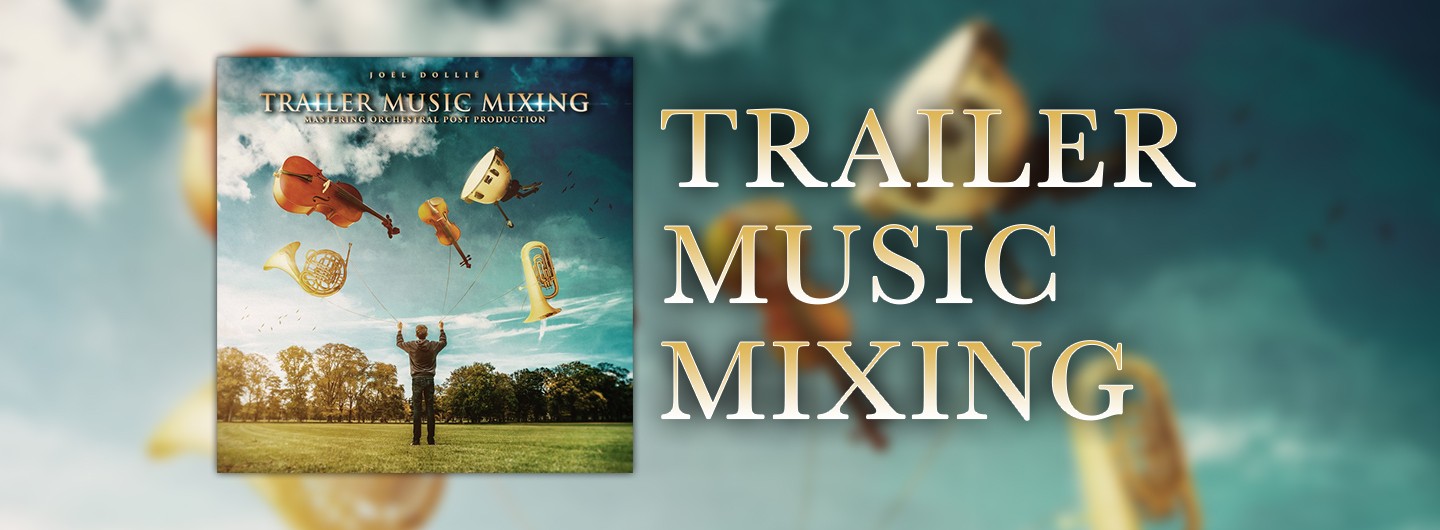Today we’re having a look at Joël Dollié’s Trailer Music Mixing online course. Joël is a professional mixing and mastering engineer who has mixed tracks for international video game companies such as Ubisoft, as well as for renowned trailer music publishers like Cavalry Music (Venom, It, Dunkirk, Logan).
In his new online course, Joël takes you through everything you need to know to start mixing and mastering epic orchestral music yourself. Whether you’re working with live orchestral recordings or sample libraries, tutor Joël shares with you all the secret and not so secret tools of the trade that are important to achieve powerful and clean sounding mixes.
I had the chance to enroll in the Trailer Music Mixing course and found out for you, which topics it covers, how the lessons are presented and what you can take away from it to kickstart the mix quality of your own productions.
ABOUT THE TUTOR
Some might know Joël Dollié as the author of an e-book called Mixing Modern Orchestral Music which was released on Amazon in June 2018. Joël himself describes the book as a resource “for composers who already have a general understanding of processing units and techniques, physics of sound, and basic mixing concepts.” Mixing Modern Orchestral Music provides an in-depth look into the world of orchestral mixing an

Trailer Music Mixing is the continuation of the e-book and while the course revisits some of the topics included in the book, it updates, elaborates and adds a large amount of new content.
OVERVIEW
Trailer Music Mixing is an online course available on the online learning platform Teachable whose environment you might already know from the
The course features 5 main chapters plus a couple of additional sections to introduce you to the world of epic music production and useful resources for further reading. Most of the content is provided in video format although one chapter consists entirely of text resources for easy reference. These are Trailer Music Mixing’s 5 main chapters:
- 01 Keys To A Great Orchestral Mix
- 02 Mix and Master Deconstructions
- 03 The 10 Second Trailer Mixing Exercise
- 04 Text
Rescources - 05 Bonus Content
In the following section, we will have a quick look into all of these chapters and see what they contain exactly.
One interesting thing before we move on: The Trailer Music Mixing course grants access to a closed Facebook group, where you can get in touch with other students, post your mixes and get feedback from both the course’s tutor Joël and the community. This way you can really solidify your newly acquired knowledge by putting it into practice on your own mixes and learning from feedback of fellow composers.
01 Keys To A Great Orchestral Mix
The first chapter of Trailer Music Mixing gets you up to speed with the essential elements of a good mix like balancing, EQing, panning
02 Mix and Master Deconstructions
This next part represents the meat and potatoes of Joël Dollié’s Trailer Music Mixing course. The Deconstruction chapter puts all of the lessons learned above into practice by showing how orchestral trailer music is mixed and mastered from start to finish. For this purpose, Joël dissects 4 entirely different tracks he mixed and in doing so shows and explains to you all the processing that went on every track. While 3 of the tracks are classic hybrid trailer music cues with different balances of orchestral and sound design elements, the fourth track is a live orchestra track recorded by a real orchestra in Budapest.
After taking you through all the layers of processing that go into a powerful mix, tutor Joël shows you how he applies the finishing touches to the stereo mix during the mastering stage. You can listen to some before-and-afters of several of the tracks featured in the course in Joël’s playlist:
03 The 10 Second Trailer Mixing Exercise
The third lecture was created to help you solidify all the things you learned previously. For this, you’re provided with all the single tracks (stems) that make up a 10-second trailer music snippet. Your assignment is to mix and master the short piece according to the techniques you’ve learned by now. After that, you can have a look at another video lecture of Joël where he shows you his personal approach to polishing the aforementioned audio snippet.
04 Text Resources
Serving as a reference book, chapter 4 provides you with a collection of 19 texts on different aspects of a professional mix. Topics include analog emulations, frequency mastering, mixing layered percussion and preparing a session for stem export – just to name a few. Not only does this chapter offer some in-depth techniques and concepts tailored to mixing cinematic music, but it also provides you with a lot of parameter starting points for different instrument groups.

05 Bonus Content
The bonus section of Trailer Music Mixing contains a 1-hour-long video Q&A with tutor Joël Dollié in which he answers a lot of production-related questions posted by students in the closed Facebook group. In here, you will also find your free copy of the e-book Mixing Modern Orchestral Music, the predecessor to the online course. You can either read it online or download the e-book as

CONCLUSION
Trailer Music Mixing offers everything you need to know to make your mixes sound loud and proud but at the same time keeping a clean and crisp sonic image. Besides providing a whole lot of essential mixing technique and production-specific industry secrets, tutor Joël Dollié also does a great job in proving that you don’t need expensive equipment and plugin voodoo to achieve great-sounding mixes. Instead, Joël shows you that anyone can produce a professional mix with a neat arrangement, a couple of basic (stock) processors and a really good knowledge of what you want to achieve with them.
Featuring 13 hours of video lessons and hundreds of pages of text resources, this course on mixing epic orchestral music is a jetpack of knowledge and inspiration for beginners and industry pros alike.
Trailer Music Mixing is accessible on Teachable for a one-time payment of $300 or 3 monthly payments of $100. Enrolling in the course grants you a lifetime access to the course material as well as a 30-day money-back guarantee should you not find what you are looking for.


0 comments on “Trailer Music Mixing Course (Review)”